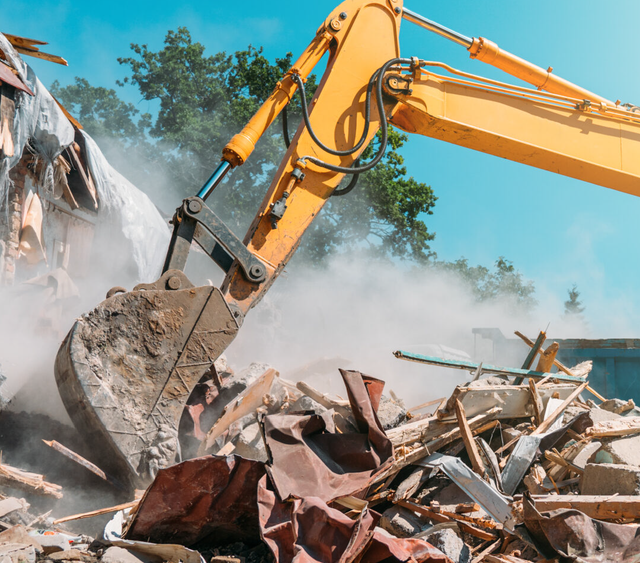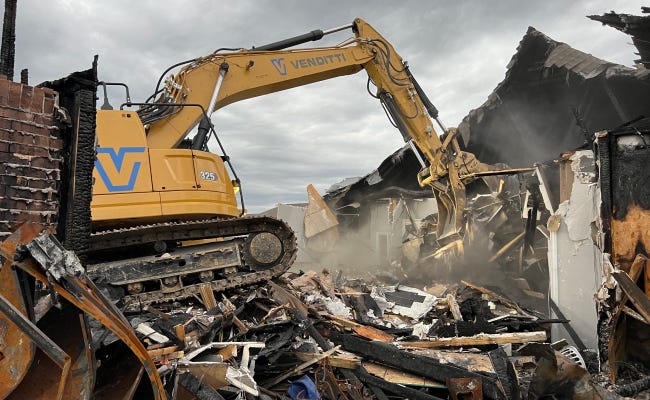Enhancing Operations: Tools and Devices for Interior Demolition
Enhancing Operations: Tools and Devices for Interior Demolition
Blog Article
The Ultimate Overview to Inside Demolition Techniques and Tools
Within the world of indoor remodellings, the art of demolition is a pivotal phase that calls for precision, ability, and the right set of devices. Whether you are a skilled specialist or a DIY lover, understanding the complexities of indoor demolition techniques can make all the difference in attaining a successful job end result. As we navigate via the subtleties of this extensive overview, we will certainly uncover crucial tools, precaution, and professional techniques that are crucial when embarking on the journey of changing a space. Keep tuned to discover the crucial insights that can raise your demolition expertise to brand-new heights.
Essential Interior Demolition Tools
When taking on indoor demolition projects, having the ideal devices is crucial for efficiency and safety. Among one of the most crucial devices for interior demolition is the demolition hammer. This heavy-duty tool is developed to appear challenging materials like concrete, ceramic tile, and drywall. Its powerful hammering activity can rapidly demolish walls, floorings, and other structures. In addition, a crowbar is important for removing components, trim, and various other products. Its take advantage of enables the easy extraction of nails and other fasteners without harming the surrounding surface areas - interior demolition.
Its capability to make specific cuts in tight rooms makes it ideal for demolition job. Generally, having these necessary interior demolition devices will significantly enhance the effectiveness and safety and security of any kind of demolition project.

Safety Safety Measures Throughout Demolition

Furthermore, all workers entailed in the demolition process should obtain appropriate training on the appropriate handling of devices and devices to reduce accidents. By sticking to these safety preventative measures, indoor demolition projects can be lugged out successfully while focusing on the well-being of all people included.
Techniques for Getting Rid Of Walls
Carrying out appropriate security preventative measures during indoor demolition tasks is crucial for developing a safe and secure workplace, and one key element of such projects entails understanding techniques for getting rid of wall surfaces. One frequently used approach is manual demolition, which requires using basic hand devices such as sledgehammers, crowbars, and utility blades to meticulously take apart the wall item by item. This technique permits better control over the demolition procedure, particularly in delicate areas where accuracy is vital.
For bigger, a lot more intricate walls, mechanical demolition may be necessary. This includes making use of heavy machinery like excavators or excavators to tear down wall surfaces efficiently. Nonetheless, it is important to make certain that the architectural integrity of the building is not compromised during mechanical demolition.
Another method for eliminating walls is deconstruction, where the wall is taken apart in a manner that protects multiple-use products. This lasting approach is ecologically friendly and can likewise help in reducing disposal prices. Whichever strategy is used, it is vital to adhere to correct safety protocols and consider the structural effects of wall surface elimination to guarantee a successful interior demolition job.
Removing Floor Covering Like a Pro
Efficiently removing flooring throughout indoor demolition requires the proper tools and techniques to guarantee a successful and smooth process. The first step in eliminating floor covering is to get rid of the location of any furnishings or barriers. Next, identify the sort of floor covering to figure out the suitable removal method. For wood or laminate floor covering, begin by removing the walls and after that use a floor covering scrape to lift and detach the slabs. Carpet elimination includes cutting the carpeting into workable sections and rolling it up for disposal. For floor tile or plastic flooring, a carve or flooring scraper can be made use of to pry up the floor tiles or sheets. It's important to use protective equipment such as gloves, safety glasses, and a mask to stop injuries and exposure to dust and debris. In addition, having a dumpster or designated disposal location ready for the removed floor covering materials is crucial for preserving a tidy workplace. By adhering to these methods and utilizing the right devices, removing floor covering like a pro can be accomplished efficiently and properly.
Appropriate Waste Disposal Approaches
After efficiently eliminating flooring site link utilizing the proper devices and methods, the following vital action in the indoor demolition procedure is applying correct garbage disposal approaches. Appropriate garbage disposal is crucial for preserving a risk-free and clean work environment during and after demolition. One of the primary approaches for waste disposal is setting apart products into different categories such as recyclable, hazardous, and general waste. This segregation ensures that products are taken care of appropriately and responsibly.

Service providers must stick to local policies relating to garbage disposal to prevent fines and penalties. Making use of professional waste administration services can enhance the disposal procedure and make certain conformity with ecological standards. By executing appropriate you could try these out waste disposal techniques, indoor demolition jobs can be finished effectively and sustainably.
Verdict
To conclude, interior demolition needs making use of essential devices and rigorous safety and security preventative measures to ensure a successful and risk-free process. Methods for eliminating walls and flooring must be done carefully and successfully to stay clear of any kind of damage or mishaps. Proper waste disposal methods are additionally essential to maintain a tidy and well organized workspace. By following these guidelines, indoor demolition can be finished properly and with marginal dangers.
One of the most essential devices for interior demolition is the demolition hammer (interior demolition). On the whole, having these vital indoor demolition tools will considerably boost the efficiency and safety and security of any demolition you could try this out task
Effectively getting rid of flooring throughout interior demolition requires the correct tools and methods to ensure a smooth and effective procedure.After efficiently eliminating flooring utilizing the appropriate tools and strategies, the following crucial action in the indoor demolition process is implementing proper waste disposal approaches.In final thought, indoor demolition calls for the use of necessary tools and strict security preventative measures to ensure a effective and safe process.
Report this page